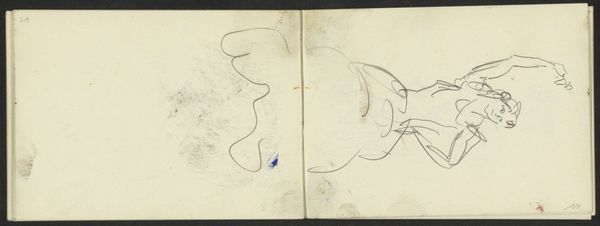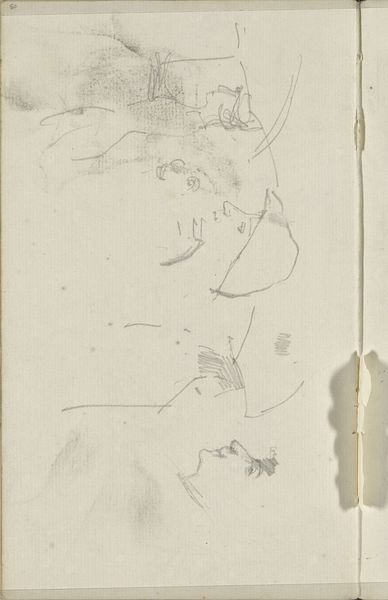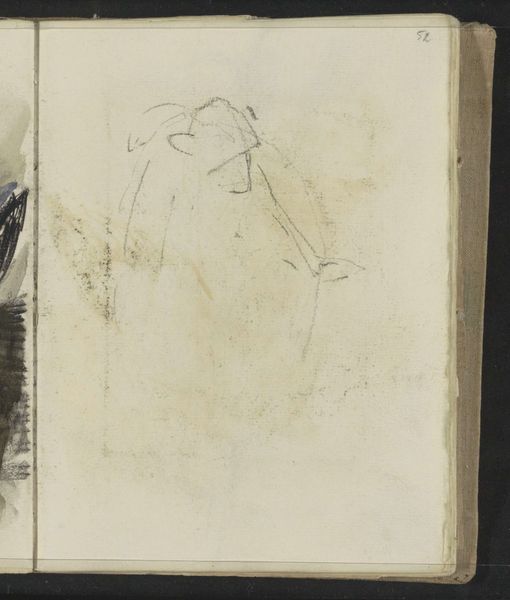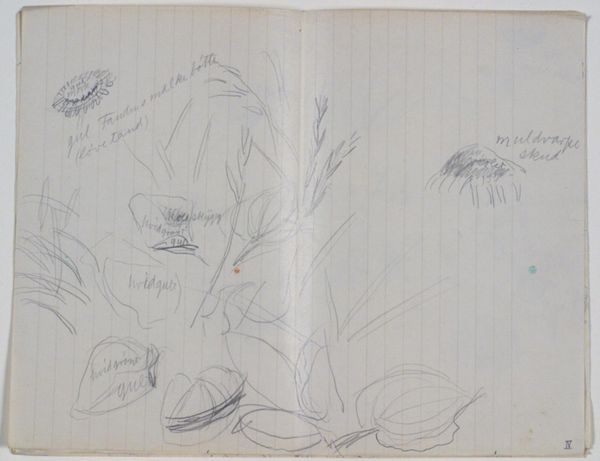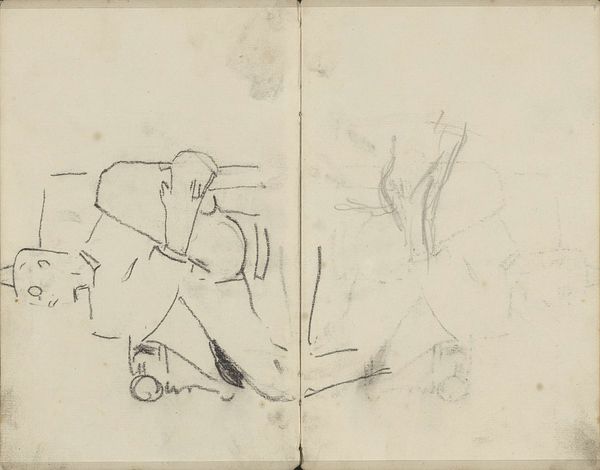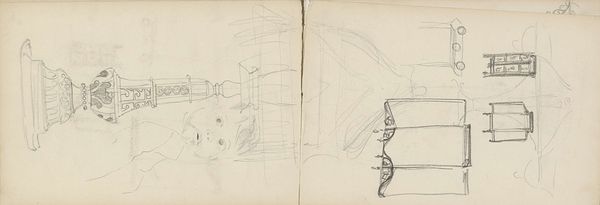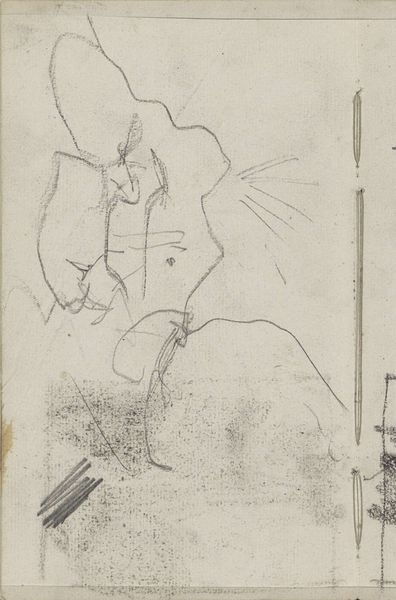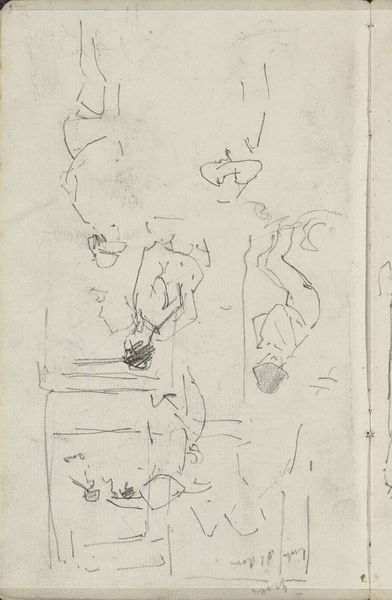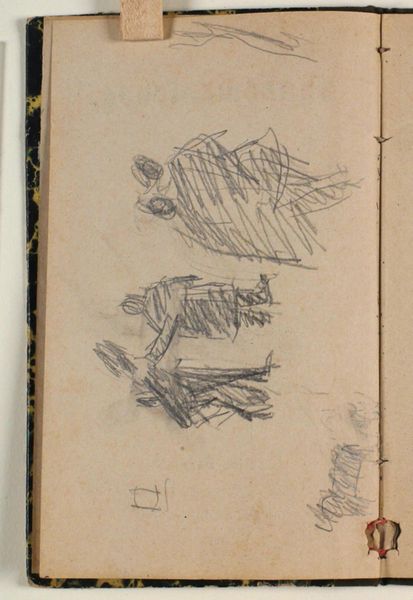
Copyright: Rijks Museum: Open Domain
Editor: This is "Zittende vrouw met ontbloot bovenlijf" – Seated Woman with Bare Torso – by Isaac Israels, dating from around 1930 to 1934. It's a pencil drawing on paper, and feels very intimate, like a peek into the artist's sketchbook. What do you see when you look at this drawing? Curator: I see Israels grappling with the realities of depicting the human form through a materialist lens. Look at the visible strokes, the layering of graphite. The ‘incomplete sketchy’ nature you pointed out becomes significant. He isn't presenting an idealized image, but documenting the labor of representation, and the means by which the image takes form. We have to also think about where he sourced these materials; what was available, accessible to him? Editor: So, it's less about the finished product and more about the process? Curator: Exactly. Consider the 'toned paper.' Why did he choose this ground? Was it for economical reasons, or did its materiality lend a specific quality to the image he wanted to achieve? Even the perceived 'quirkiness' might be an engagement with the limitations and possibilities of the pencil itself, its ability to convey form, light, and shadow. How does this materiality challenge established art traditions? Editor: By showing the working process and bringing the focus on making art with everyday material instead of a focus on idealization? So instead of divine talent, you see human labor using material limitations. It makes me think, what’s considered “high art” anyway? Curator: Precisely! This sketch collapses traditional hierarchies and values the work that went into the image and production. The material decisions and the labor involved become part of the artwork’s narrative and cultural implications. Editor: That definitely gives me a new perspective to appreciate. It is no longer just the final form we should look for but the materiality that dictates this form. Curator: And what it says about the social conditions and material culture in which the artist worked! A constant reminder that art never appears out of thin air.
Comments
No comments
Be the first to comment and join the conversation on the ultimate creative platform.
